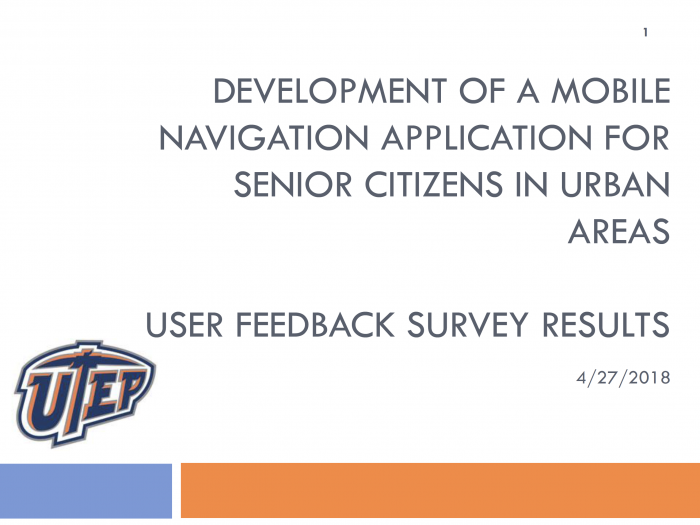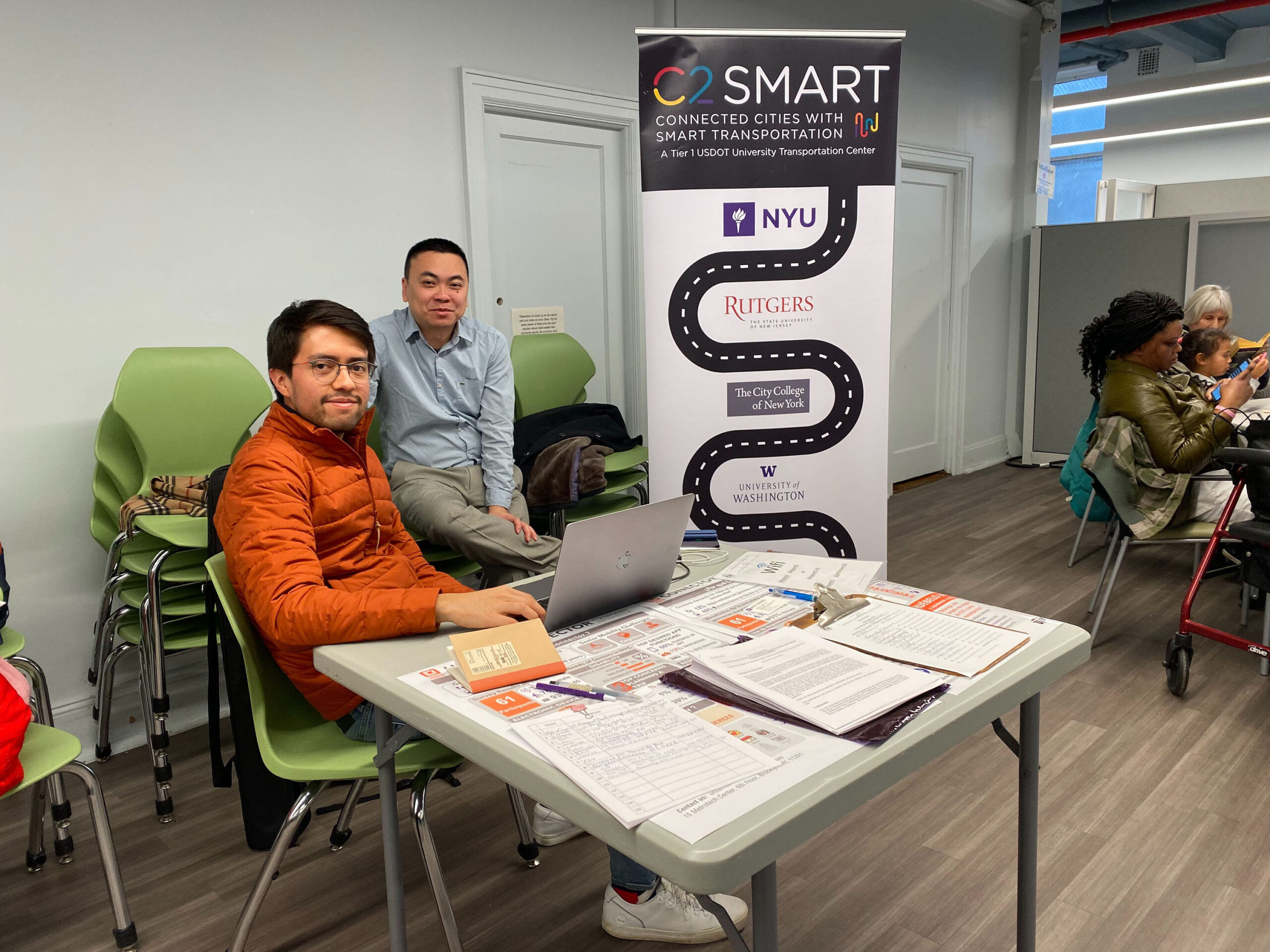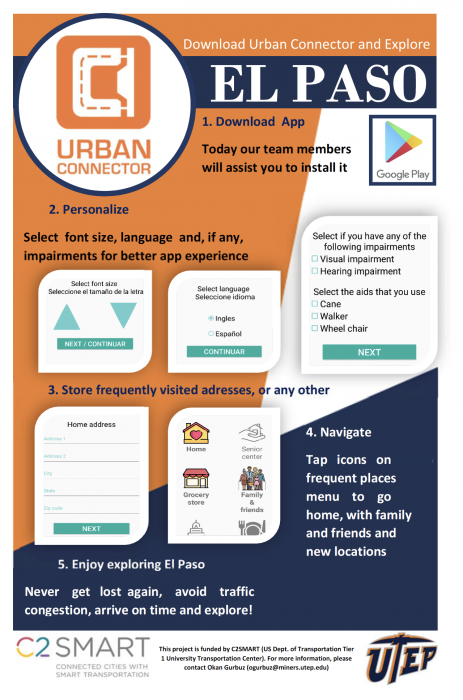Urban Connector Year 3: Field Tests
Background
Over the past three years, researchers at UTEP and NYU have collaborated on the development of a smartphone application, Urban Connector, which is designed to cater to the urban mobility needs and preferences of seniors in El Paso. A prototype of the application was developed and a follow-up survey was conducted to gather feedback. The app was improved to its beta version, and was tested by seniors in El Paso in their day-to-day travels.
After testing the initial build of the Urban Connector app in El Paso, the newest version was tested with seniors in New York City as part of the field tests scheduled for the third year of the Urban Connector Project.
The goal was to recruit seniors to test the most recent build of the Urban Connector app for both Android and iOS by scheduling visits to at least two senior centers in Brooklyn or Manhattan. After installation and instructions on how to use the app during visits to the centers, senior who signed up would then have a minimum of two weeks to try the app. After this time, seniors were contacted to collect their feedback with a survey. The results from this survey are shown on the left. Some interesting findings include:
- Seniors in New York City seem to be more tech-savvy than seniors in the rest of the country. More than half of the participants reported using the MyMTA app for the New York City Transit system, which can have complex navigation features. This, and the simplicity of the features of the Urban Connector app might be a cause for the low interest among the seniors contacted in New York City.
- Most seniors in New York City choose the bus as their main mode of transportation. Since there’s already more comprehensive apps that help seniors navigate the transit system, such as MyMTA, and the Urban Connector app doesn’t simplify the route explanation process for public transportation for these people.
- The overall feedback from the survey was positive. However, one main complaint was the limited capability of adding addresses to the “Frequent Places”, and there is a desire for an option to add multiple friends addresses.
Objectives
- Customize the beta version of the UC application for the needs of seniors in New York City
- Perform a beta test in New York City and gather user input
- Fine-tune the UC application based on the information collected in the third survey in El Paso to release version 1.0 of the application
- Collect a set of UC application usage data through an anonymous pilot test
- Explore a data analysis framework that will characterize a UC application user’s mobility patterns while maintaining user anonymity
Deliverables
- A beta version of the UC application for New York City
- Survey results of the beta version from New York City
- Version 1.0 of the UC application for El Paso
- A set of usage data collected during the anonymous pilot test in El Paso
- A framework to analyze utility vs. privacy of data gathered through the UC application
Kelvin Cheu
PRINCIPAL INVESTIGATOR
Guillermina Núñez-Mchiri
CO-PRINCIPAL INVESTIGATOR
Okan Gurbuz
GRADUATE RESEARCH ASSISTANT
Joseph Chow
CO-PRINCIPAL INVESTIGATOR
Natalia Villanueva Rosales
CO-PRINCIPAL INVESTIGATOR
Tania Licon
PROJECT MANAGER
| Principal Investigator | Kelvin Cheu, UTEP |
| Funding Source | C2SMART Center: $149,011 UTEP (cost share): $50,000 NYU (cost share): $36,465 |
| Total Project Cost | $235,476 |
| USDOT Award # | 69A3551747124 |
| Start and End Dates | 03/01/2019-12/31/2020 |
| Implementation of Research Outcomes | This project includes collecting feedback from actual/ potential users in New York City and El Paso to refine the UC application. The goal of the UC is to provide an App that is usable and useful for seniors to increase the number of users. Version 1.0 of the application will be released to the public for free download. |
| Impacts/Benefits of Implementation | The smartphone application is expected to improve the mobility of the seniors by helping them identify key locations they need to access, serving as a virtual companion when seniors are commuting, and by streamlining information on public services offered locally for older adults in the City. The usage data will enable city and transportation agencies to understand their mobility patterns of older adults with privacy of their data in mind. The city and service providers for seniors can use these data to improve infrastructure including wheel chair accessibility and ramps, as well as public services for the seniors. |














